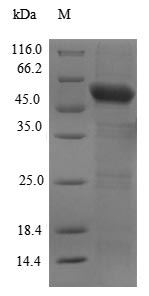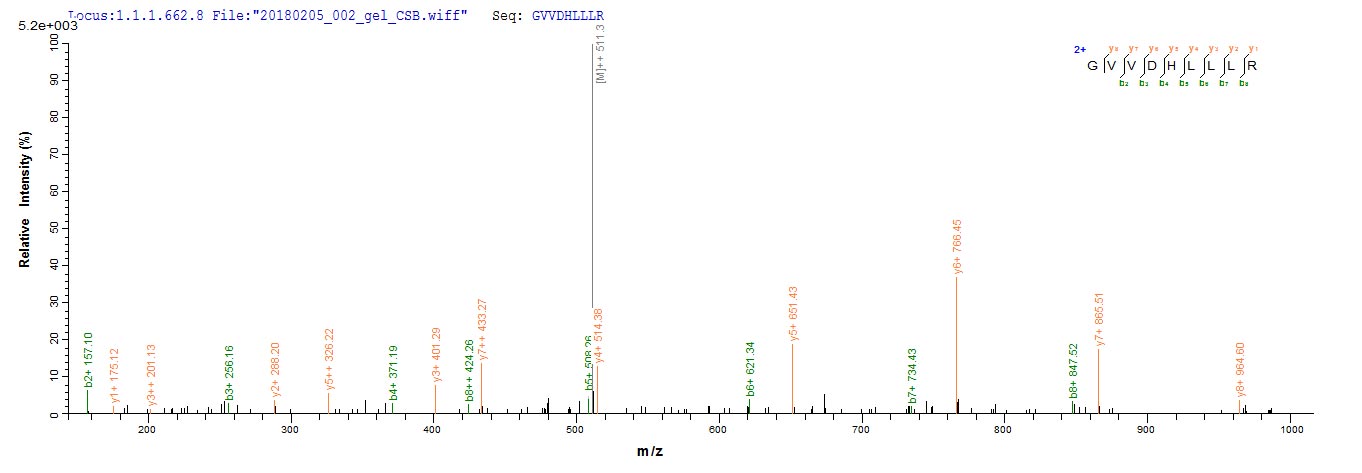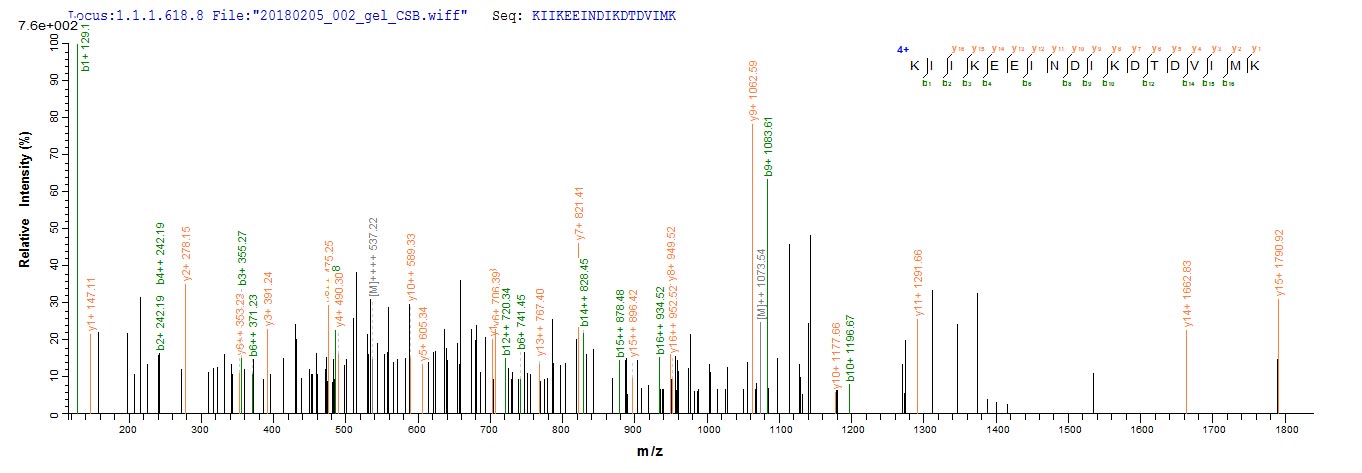The recombinant 6xHis-SUMO-tagged cyclic GMP-AMP synthase (CGAS) protein was expressed in E.coli. Amino acid residues Gly161-Phe522 of human CGAS protein are contained in this recombinant protein. The SDS-PAGE measured its purity of over 90%, and the CGAS protein migrated to the molecular mass of about 50-61 kDa on the gel. And It was also validated by the LC-MS/MS analysis. In addition to generating specific anti-CGAS antibodies, this recombinant CGAS protein may be also used in the studies of the CGAS-STING signaling pathway.
CGAS is an enzyme that synthesizes second messenger GAMP, which is activated upon binding of CGAS to DNA or RNA-DNA hybrids in the cytoplasm. As a DNA damage sensor, CGAS detects pathogenic DNA to trigger an innate immune reaction involving a strong type I interferon response against microbial infections through the CGAS-STING signaling pathway. CGAS also plays a major role in modulating autophagy. It is involved in cancer, diabetes, and immune disorders. Manish Sharma etc. demonstrated that CGAS is up-regulated in Huntington disease (HD) and mediates inflammatory and autophagy responses and suggested that the CGAS pathway may be the therapeutic target for HD.








